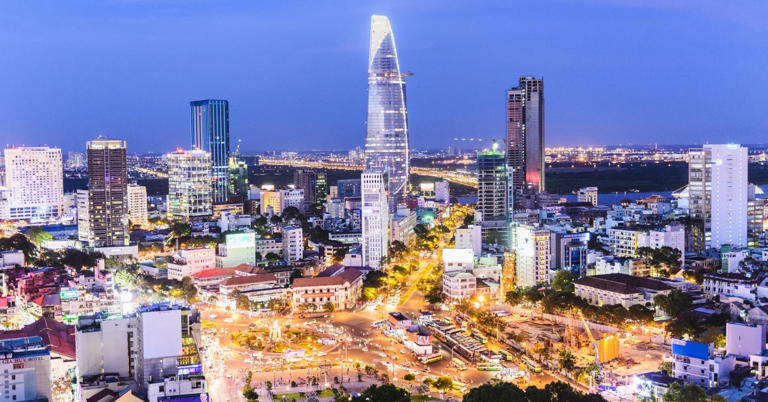Southeast Asia has emerged as a pivotal region benefiting significantly from the “China Plus One” strategy, which aims to mitigate risks associated with over-reliance on China’s market and supply chains. This strategic diversification has been accelerated by geopolitical tensions and global economic shifts, particularly intensified during the Covid-19 pandemic lockdowns.
Kuo-Yi Lim from Monk’s Hill Ventures highlighted Southeast Asia’s advantageous position in attracting both foreign and Chinese companies seeking to diversify their manufacturing bases and operational footprints. This trend has led to substantial increases in foreign direct investments (FDI) across ASEAN countries, including Indonesia, Malaysia, Philippines, Thailand, Singapore, and Vietnam.
According to economists at OCBC, FDI inflows into ASEAN economies surged to $236 billion in 2023, surpassing the annual average of $190 billion observed from 2020 to 2022. This influx predominantly originates from major global players such as the U.S., Japan, European Union, Mainland China, and Hong Kong, reflecting the region’s growing importance in global supply chain resilience strategies.
Vietnam: A Manufacturing Hub
Vietnam has particularly thrived under the “China Plus One” strategy, becoming a key destination for diversifying manufacturing away from China. Major tech giants like Apple have shifted production lines to Vietnam, drawn by competitive labor costs, market access facilitated by free-trade agreements, and geopolitical stability. Vietnam’s strategic proximity to China further enhances its attractiveness as a manufacturing and export base, crucial for sectors ranging from electronics to consumer goods.
Malaysia: Semiconductor and Beyond
In Malaysia, the semiconductor industry has witnessed a resurgence with companies like Intel, GlobalFoundries, and Infineon expanding operations. The country’s expertise in chip packaging, assembly, and testing, coupled with lower operating costs, has reinforced its position as a preferred location amid U.S.-China trade tensions. Additionally, Malaysia has seen increased investments in data centers and emerging sectors like solar energy and electric vehicle (EV) components, broadening its economic portfolio.
Indonesia: Emerging EV Hub
Indonesia is leveraging its abundant natural resources—copper, nickel, cobalt, and bauxite—to position itself as an integrated hub for electric vehicle (EV) manufacturing. The government’s incentives to attract EV companies align with its ambitions to scale up production across the EV supply chain. Chinese automakers like BYD are already planning commercial EV production in Indonesia by 2026, marking a significant step in the country’s industrial diversification efforts.
Singapore: Regional Business Hub
Singapore continues to serve as a premier destination for global firms establishing regional headquarters, navigating regional markets, and accessing finance and regulatory infrastructure. The city-state’s trusted status amid geopolitical uncertainties has attracted Chinese companies like TikTok and Shein to set up regional bases, ensuring operational continuity and market access across Southeast Asia.
Outlook and Strategic Imperatives
Looking forward, Southeast Asia’s role in global supply chains is poised to expand further as businesses prioritize resilience and operational flexibility. Governments across the region are expected to continue implementing policies that support industrial diversification and attract FDI, thereby enhancing economic stability and growth prospects amidst global uncertainties.
In conclusion, Southeast Asia’s ascendance under the “China Plus One” strategy underscores its growing importance in global economic dynamics. By capitalizing on its strengths in manufacturing, strategic location, and supportive policy environments, the region is poised to sustain its momentum as a preferred destination for diversified investments and operational expansions in the years ahead.
